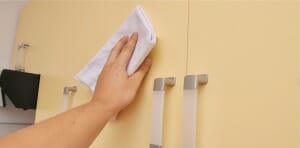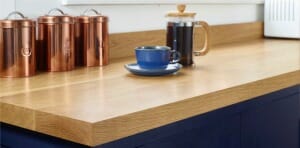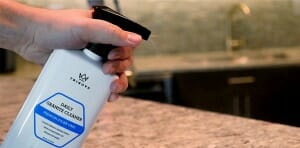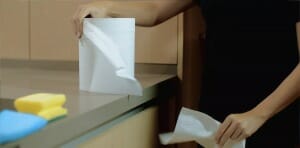Mastercraft® Kitchen Door Care
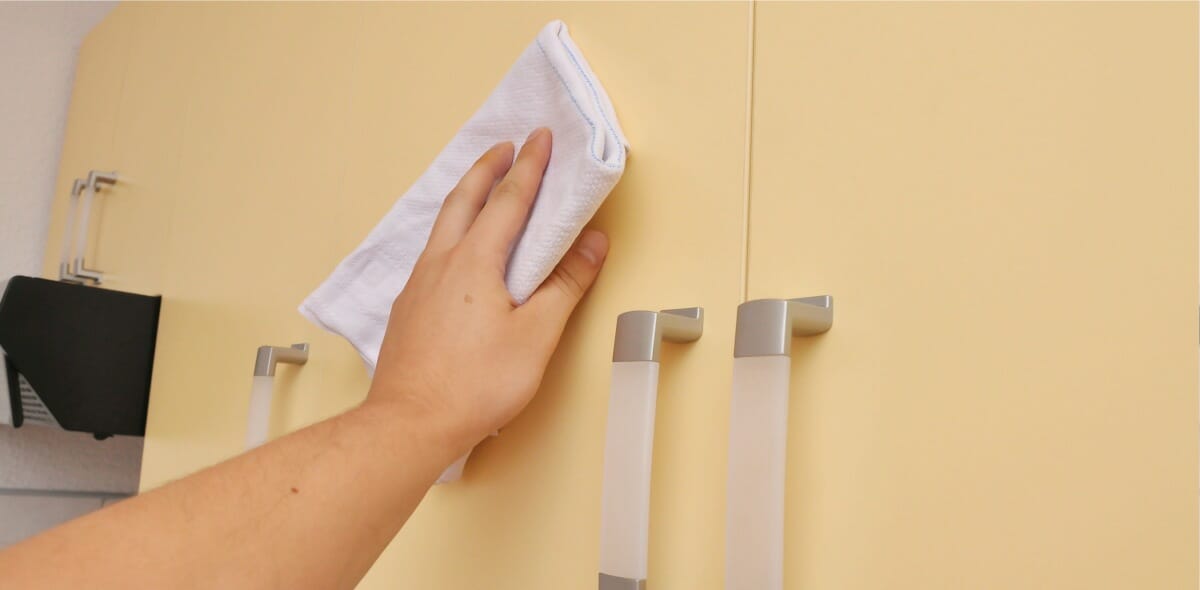
We recommend the following door cleaning instructions for all our doors:
- Clean the doors using only a solution of 95% luke warm water with no more than 5% soap
- Do NOT spray anything onto your doors – this includes the solution recommended above
- Use a clean damp (not wet) cloth
- Dry with a soft clean cloth. If it is a timber door run the cloth along the grain direction
- Any cooking marks must be wiped immediately
- Do not allow liquids to seep into joints of doors, wipe any spillages immediately.
Do not use any of the products listed below to clean the door as it may mark and damage the surface:
- Wax furniture polish
- Bleach / chlorine based cleaning products
- Abrasive cleaners
- Solvents
- Multi-purpose cleaners
- Alcohol based cleaners
- Ammonia or any other similar product
- Scouring pads or abrasive cloths
Environmental Information
Please be aware, localised or intense heat/steam can damage fascias, subsequently, the use of small appliances such as kettles, toasters etc. in close proximity to your kitchen fascias should be avoided. Doors should not be exposed to extreme temperature changes. Due to their manufacturing process vinyl doors must not be exposed to temperatures above 70º C as this may cause damage to the door’s surface.
Foil / Vinyl / over lacquered Doors
Some doors may have a protective film on the face. Direct exposure to sunlight may cause an adverse effect, therefore, it is recommended you remove this film as soon as possible after fitting. Due to their manufacturing process vinyl doors must not be exposed to temperatures above 70º C as this may cause damage to the door’s surface.
Timber / Veneer / Hand Painted Doors
Timber is a natural product; therefore colour, grain structure and features will differ from door to door. Raw timber doors must be treated before use.
Timber and veneer doors have a unique and natural character and because of this colours may change over time when exposed to sunlight. Please be aware of this natural colour change if we ever change a door to suit a previous install.
Timber can be prone to expansion and shrinkage based upon the environment which it is installed in. Timber and veneered doors are affected by moisture; if there is too much moisture in the environment it can have an adverse effect on the door over a period of time and it may lead to timber expanding, especially during winter periods. Excess moisture may also be found in new builds and properties where renovation work has been carried out; examples include plastering or floor screeding, etc. In the summer months when the environment is drier, shrinkage may occur in the timber.This natural movement of timber may cause the surface finish of the timber / veneered door (i.e. painted, varnished, lacquered finishes, etc) to move with the timber. If this occurs then there is a chance that it may result in shrinkage and hairline cracks appearing on the door.
The above also applies to hand-painted doors.
Environmental Information
Newly plastered rooms, plaster repairs, floor screeding, renovations, etc should be left to dry out thoroughly before installation of doors, whatever their material. When doors are fitted very close to an oven, a suitable heat shield should be used if not provided by the appliance.
Door Colour and UV light
Any door range, whether it be over lacquered, vinyl wrapped or painted will change colour over time due to natural UV exposure. Please be aware of this natural occurrence if replacing doors previously installed.
Door Storage After Delivery and Before Installation
Doors should be stored on a stable flat stillage in a horizontal position. Please ensure doors are placed in a cool and dry area.
Timber Worktops
For timber worktops care please refer to our timber worktops care page. For other products go to Mastercraft products care.
